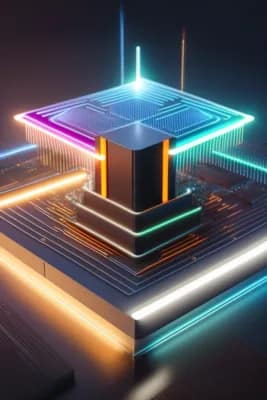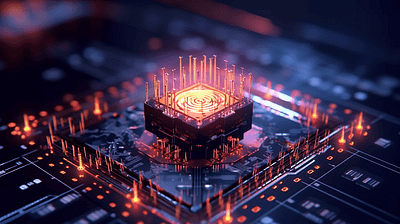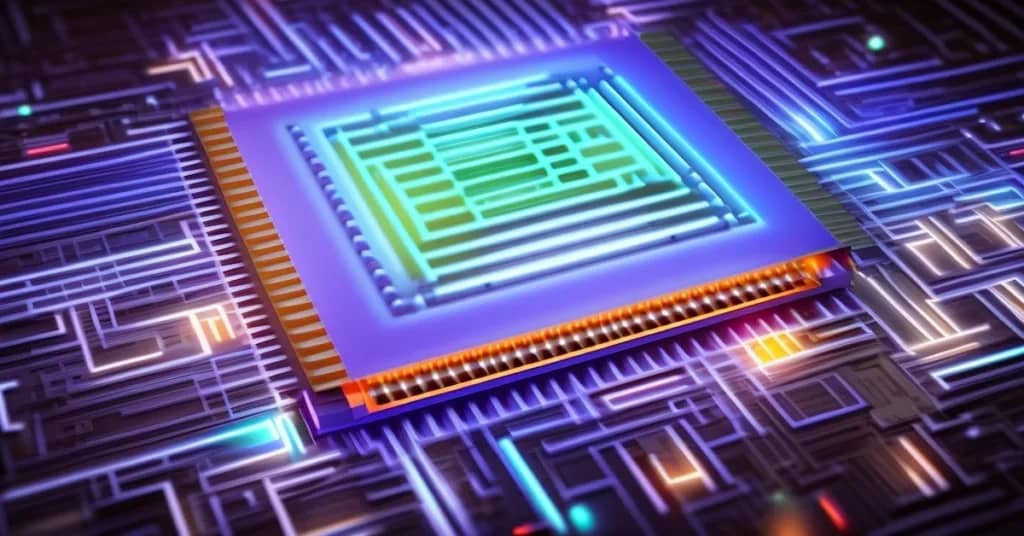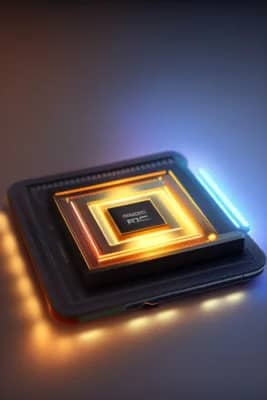
When mentioning the word ‘chip’, many envision the silicon core powering their devices. However, let’s shift gears and dive into the realm of the photonics chip, a groundbreaking technology that redefines our digital age. Get ready as we embark on a lightspeed journey through the Photonics Chip Architecture Guide.
When you hear the term ‘chip’, what comes to mind? Perhaps you imagine the silicon brain pulsing within the heart of your laptop or smartphone.
Today, we journey to the frontier of technology to explore an invention as transformative as it is thrilling – the photonics chip.
Like a City
The architecture of a photonics chip is a sight to behold. Rather than the transistors and circuits that constitute a silicon chip, a photonics chip is a maze of waveguides, resonators, and modulators – all meticulously designed to guide, control, and manipulate light.
Light pulses are generated, modulated to carry data, channeled along waveguides, and finally detected and converted back into electronic form.
Consider a photonics chip like a city, not unlike New York, where the waveguides are the bustling avenues, steering the photons (akin to the city’s denizens) through their daily routines.
Undoubted Trailblazer
In the constellation of researchers illuminating the field of photonics, one name shines particularly bright: Dr. David Miller from Stanford University, an undoubted trailblazer.


His work, dating back to the late 1980s, laid the groundwork for the design principles and theoretical frameworks integral to the development of photonic chips.
Equally influential is the team led by Dr. Michal Lipson at Columbia University, renowned for their breakthroughs in integrating photonic chips with existing silicon technology.
The robust and efficient manufacturing of photonics chips, minimizing data loss, and integrating these chips into current electronic systems are just a few hurdles that researchers face.
Yet, every challenge surmounted is a testament to the relentless human endeavor to better our world through technology.
Photonics Chip Architecture: Next Revolution in Computing
Photonics chips, while still in their adolescence, hold a promise of a future where data is processed at unprecedented speeds with minimal energy consumption.
They are the beacon lighting the way to the next revolution in computing – a revolution driven by the most fundamental particle of light, the photon.
After all, as we’ve learned from our journey through the history of computing, in the dance of innovation, the music never truly stops.
Neural Networks on Photonic Chips: A Bright Future for AI
Illuminating the Basics: What’s a Neural Network on a Photonic Chip?

Before we dive headfirst into the captivating ocean of photonics and artificial intelligence (AI), let’s first dip our toes into understanding some core concepts.
Think of a neural network as the brain’s web of neurons. In the world of AI, it’s a series of algorithms that identifies underlying relationships in a set of data—just like how our brain processes and interprets information.
Now, imagine replacing electricity, which is the lifeblood of conventional chips, with light!
That’s the marvel of a photonic chip. Instead of electrons moving about, you’ve got photons – light particles – zipping around at, well, the speed of light!
Why Light is the New Frontier in AI
Speed and efficiency are the twin mantras of AI research. Traditional electric-based chips are fast, but they have their limits. They also generate heat, lots of it, leading to energy inefficiencies.
Photonic chips promise to deliver computations at the speed of light, literally. This means ultra-fast data processing and, given that light particles don’t heat up like electrons, a significantly cooler operation.
It’s like having the Usain Bolt of chips, only without breaking a sweat!
The Bright Minds Behind The Technology
While the concept might sound futuristic, some of the brightest minds globally have been working tirelessly behind the scenes.
Companies like IBM, Intel, and Hewlett-Packard have all teased advancements in integrated photonic systems.
IBM, for instance, has been a pioneer in pushing the boundaries of quantum computing and optics, whereas Intel has been exploring silicon photonics for a while now.
They’re setting the stage for a future where AI doesn’t just work smarter but also faster and more efficiently.
Where We Stand and What’s on The Horizon
You’re probably thinking, “All this sounds fantastic, but when can I get my hands on such groundbreaking tech?”
The development of comprehensive neural networks on photonic chips is still in its nascent stages. But don’t be disheartened. The rate of technological advancement in the AI domain has been nothing short of spectacular.
Given the pace at which these giants are investing and innovating, we could expect the first iterations of commercial applications within the next 5 to 10 years.
Yes, it might sound like a while, but think about it: a decade ago, we couldn’t have even fathomed half the gadgets we now consider indispensable!
Decoding the Potential: Photonics Chip Uses
AI’s capabilities with photonic neural networks stretch as far as the imagination can reach. From healthcare to autonomous vehicles, from finance to entertainment—every sector stands to benefit.
Ultra-fast computations mean real-time data processing. For sectors like finance, which sees billions of transactions every second, this could be revolutionary.
In the realm of healthcare, imagine diagnostic tools that can analyze vast amounts of data in real-time, offering instantaneous results.
And for the average Joe? Well, your Siri, Alexa, or any voice-activated assistant would not just respond faster but might even start predicting what you’d ask. Spooky? Perhaps. Exciting? Definitely!
Wrapping Up: The Dawn of A New AI Era
The fusion of neural networks and photonic chips isn’t just a confluence of two technologies. It’s a synergy that promises to catapult AI into an era of unprecedented capabilities.
As Ernest Hemingway once said, “The world breaks everyone, and afterward, many are strong in the broken places.” Our past technological limitations are giving rise to innovations that might one day become the gold standard.
So, as we stand on the brink of this exciting frontier, it’s essential to appreciate the vast possibilities ahead. And who knows?
Maybe the next time you read about photonic chips, it’ll be through a device powered by one.




